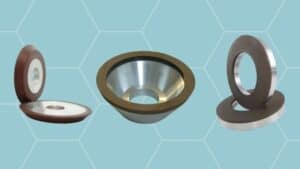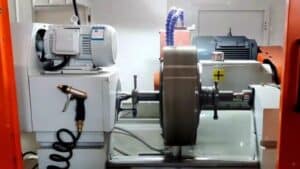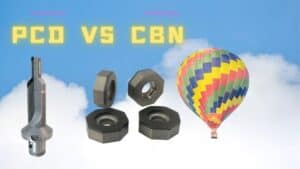Introduction to PCD Diamond Cutting Tools
What is PCD?
Polycrystalline Diamond (PCD) is a synthetic diamond product that is produced by sintering together selected diamond particles with a metal matrix using sophisticated technology. The result is an extremely tough, wear-resistant material with the ability to cut even the most abrasive materials.
The Importance of PCD in Industrial Cutting
PCD is known for its superior hardness, high thermal conductivity, and excellent wear resistance, making it an ideal material for cutting tools. It’s particularly effective for cutting highly abrasive materials, offering a reliable solution for industrial cutting challenges.
Types of PCD Diamond Cutting Tools
PCD Diamond Drills
PCD diamond drills are renowned for their ability to maintain sharpness, even when drilling through tough, abrasive materials. They offer excellent wear resistance, ensuring a longer tool life compared to conventional drills.
PCD End Mills
End mills with PCD tips are used in milling applications. These tools offer a high removal rate and superior surface finish, even when working with difficult-to-machine materials.
PCD Routers
PCD routers are used for high-speed milling and cutting applications. They provide a reliable solution for the unique challenges faced when milling and drilling composite materials.
PCD Saws
PCD saw blades are excellent options for cutting abrasive materials on panel saws, sliding table saws, and other special sawing applications. They offer a longer lifespan and better performance compared to traditional saw blades.
PCD Turning Tools
PCD turning tools are used in lathes for turning, facing, and boring operations. They offer superior hardness and heat resistance, making them ideal for working with hard and abrasive materials.
PCD Milling Tools
PCD milling tools, such as face mills and circular milling cutters, allow high-feed milling operations to achieve a reliable and faster machining process.
PCD Reaming Tools
PCD reaming tools are used for enlarging or finishing a hole that has already been drilled. They offer excellent surface finish and dimensional accuracy.
Comparing PCD with Other Cutting Tools
PCD vs. Carbide Cutting Tools
While both PCD and carbide cutting tools offer high hardness and good wear resistance, PCD tools generally have a longer tool life and can withstand higher cutting speeds. They are also more resistant to abrasive wear.
PCD vs. CVD Diamond Tools
CVD (Chemical Vapor Deposition) diamond tools also offer high hardness and wear resistance. However, PCD tools are generally more durable and suitable for machining a wider range of materials.
Conclusion
PCD diamond-cutting tools offer a range of benefits, including superior hardness, excellent wear resistance, and long tool life. They are available in a variety of types, each designed for specific applications, making them an essential part of industrial cutting operations.
FAQs
- What is PCD in diamond-cutting tools? PCD stands for Polycrystalline Diamond. It’s a synthetic diamond product used in cutting tools due to its hardness, thermal conductivity, and wear resistance.
- What are the different types of PCD diamond-cutting tools? There are several types, including PCD drills, end mills, routers, saws, turning tools, milling tools, and reaming tools.
- How does PCD compare to carbide-cutting tools? PCD tools generally have a longer tool life, can withstand higher cutting speeds, and are more resistant to abrasive wear compared to carbide tools.
- What is the difference between PCD and CVD diamond tools? Both offer high hardness and wear resistance, but PCD tools are generally more durable and suitable for machining a wider range of materials.
- What are the benefits of using PCD diamond-cutting tools? Benefits include superior hardness, excellent wear resistance, long tool life, and the ability to machine a wide range of materials.











